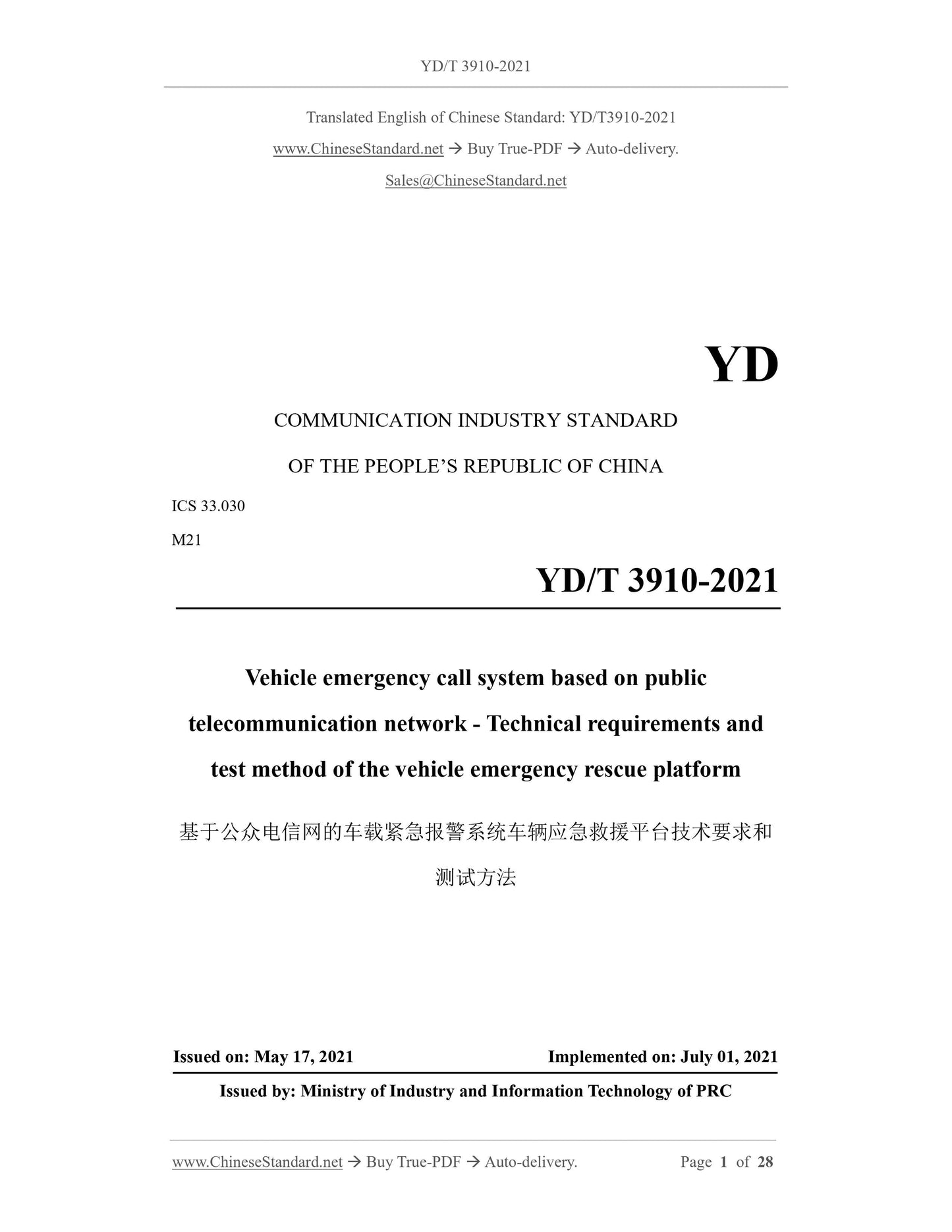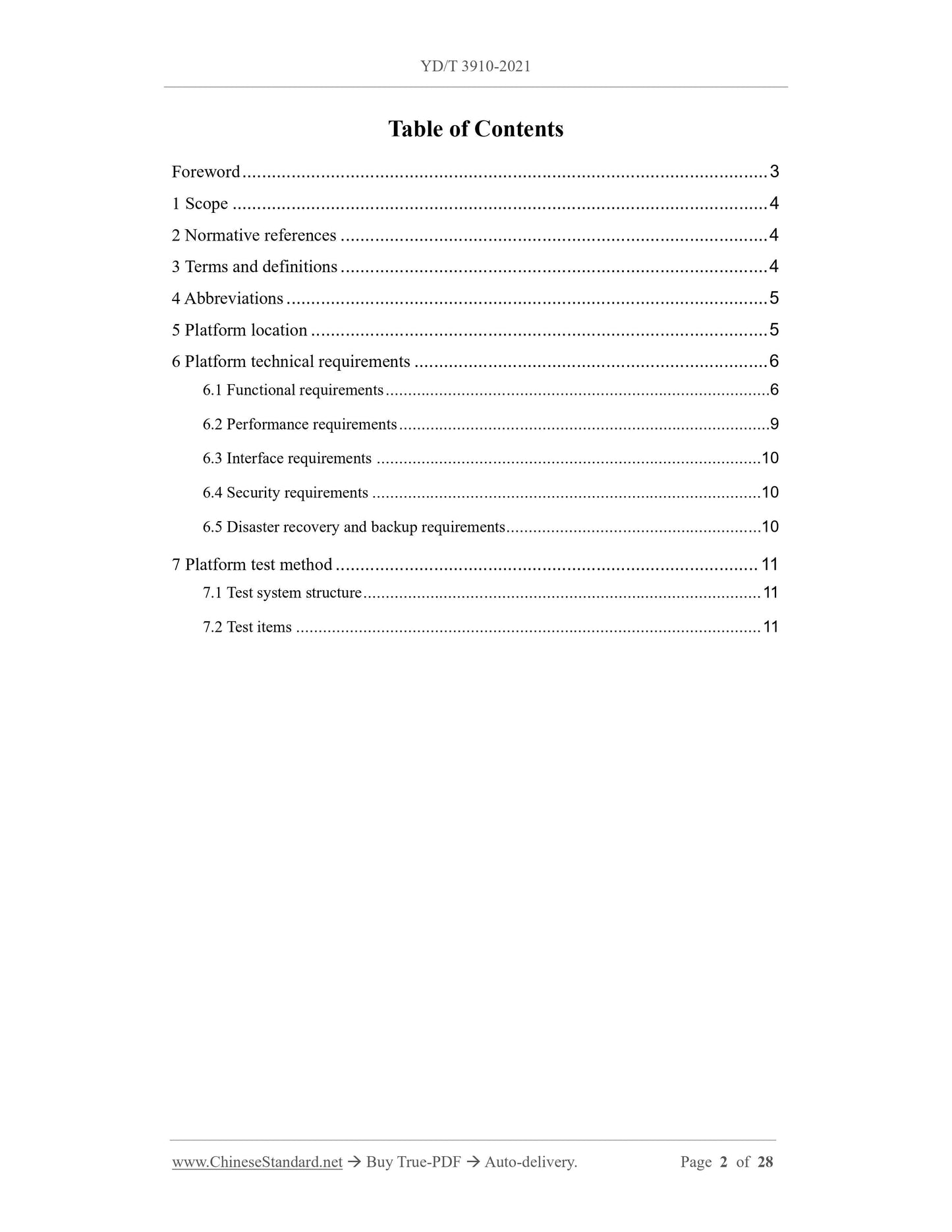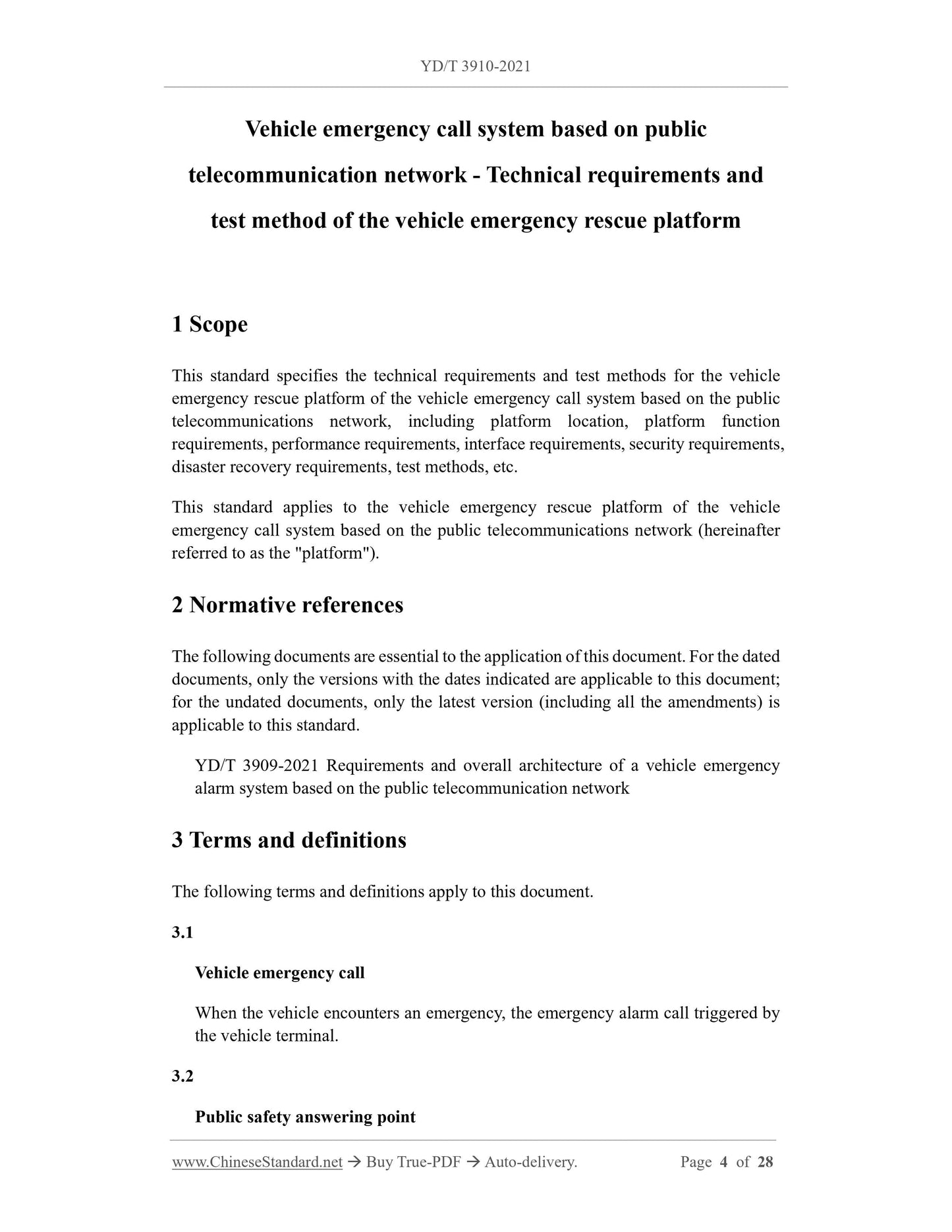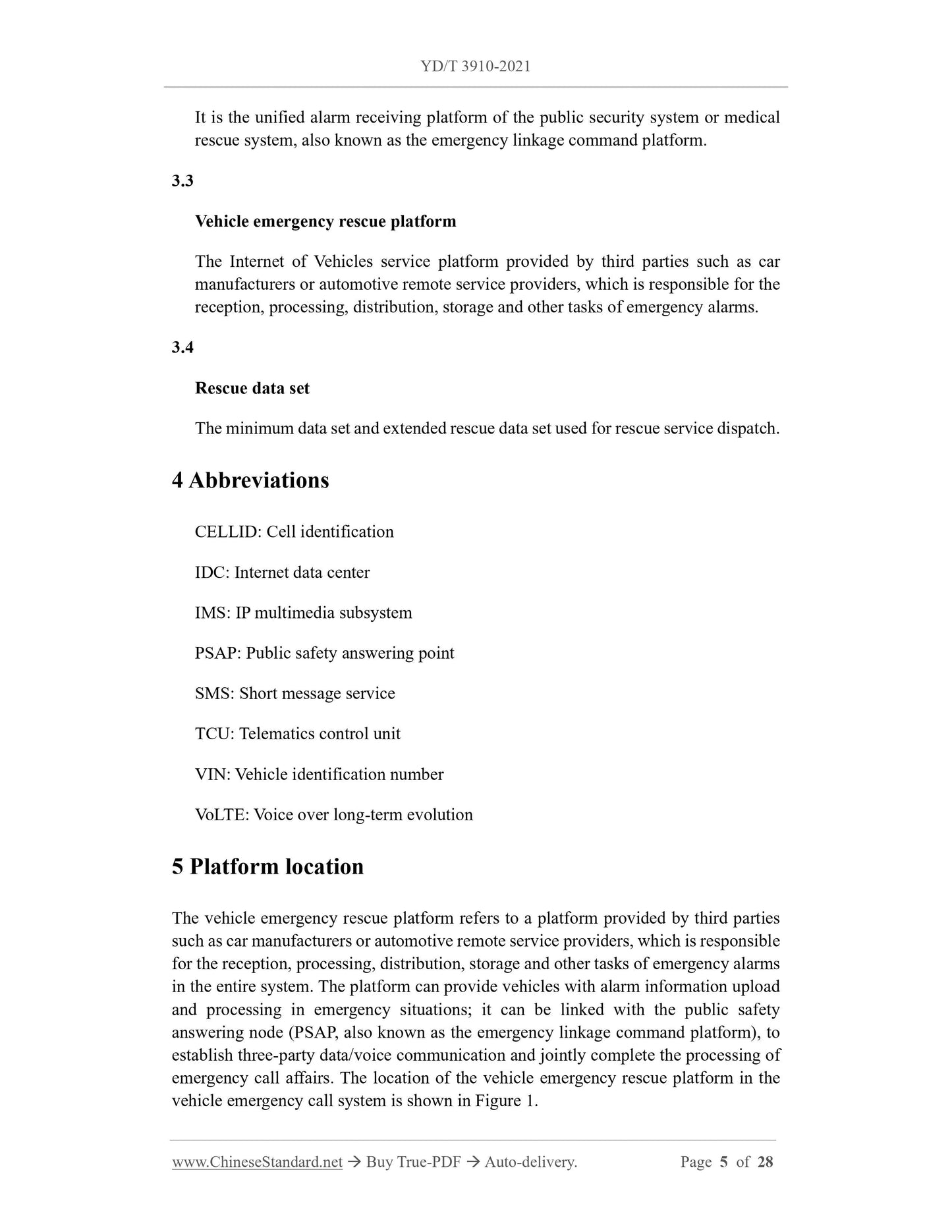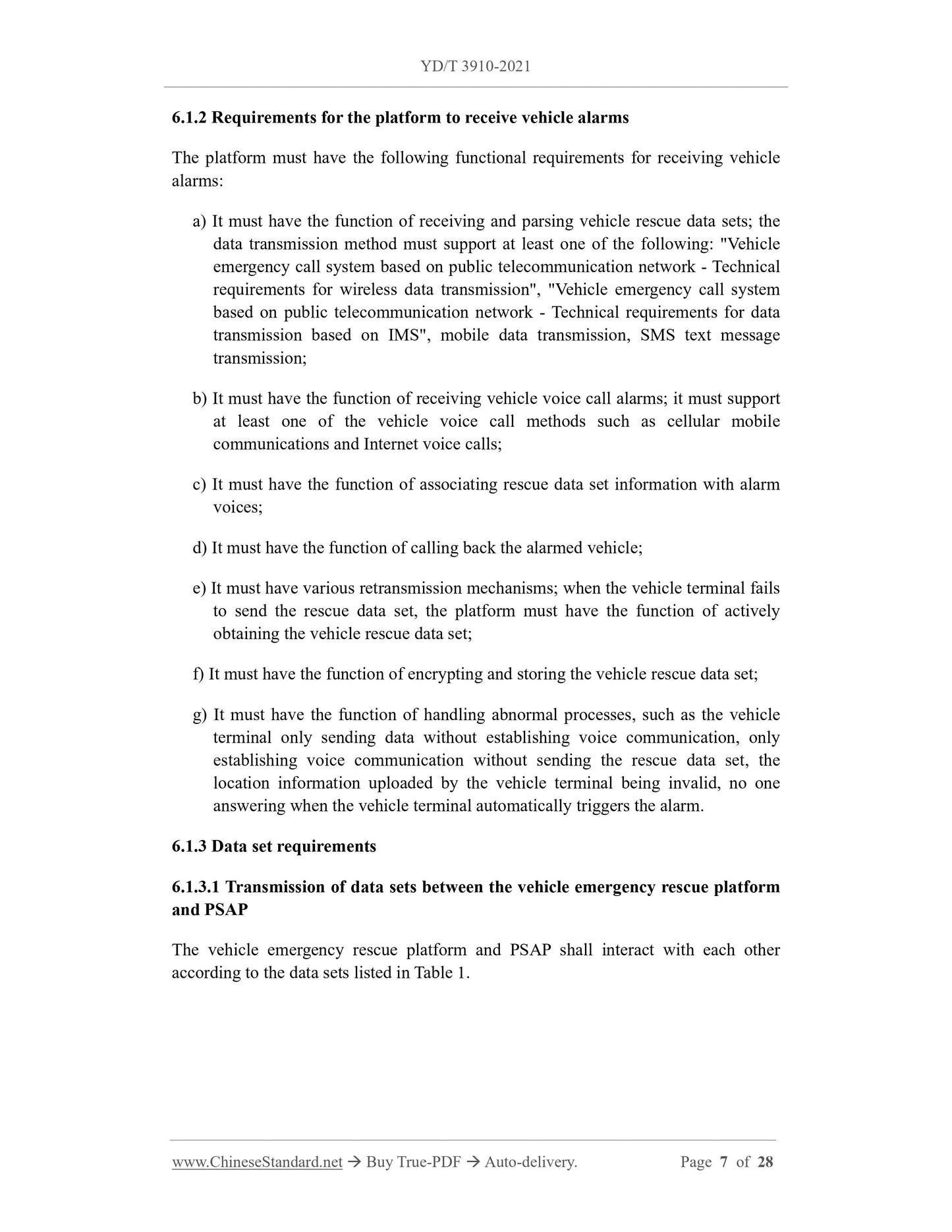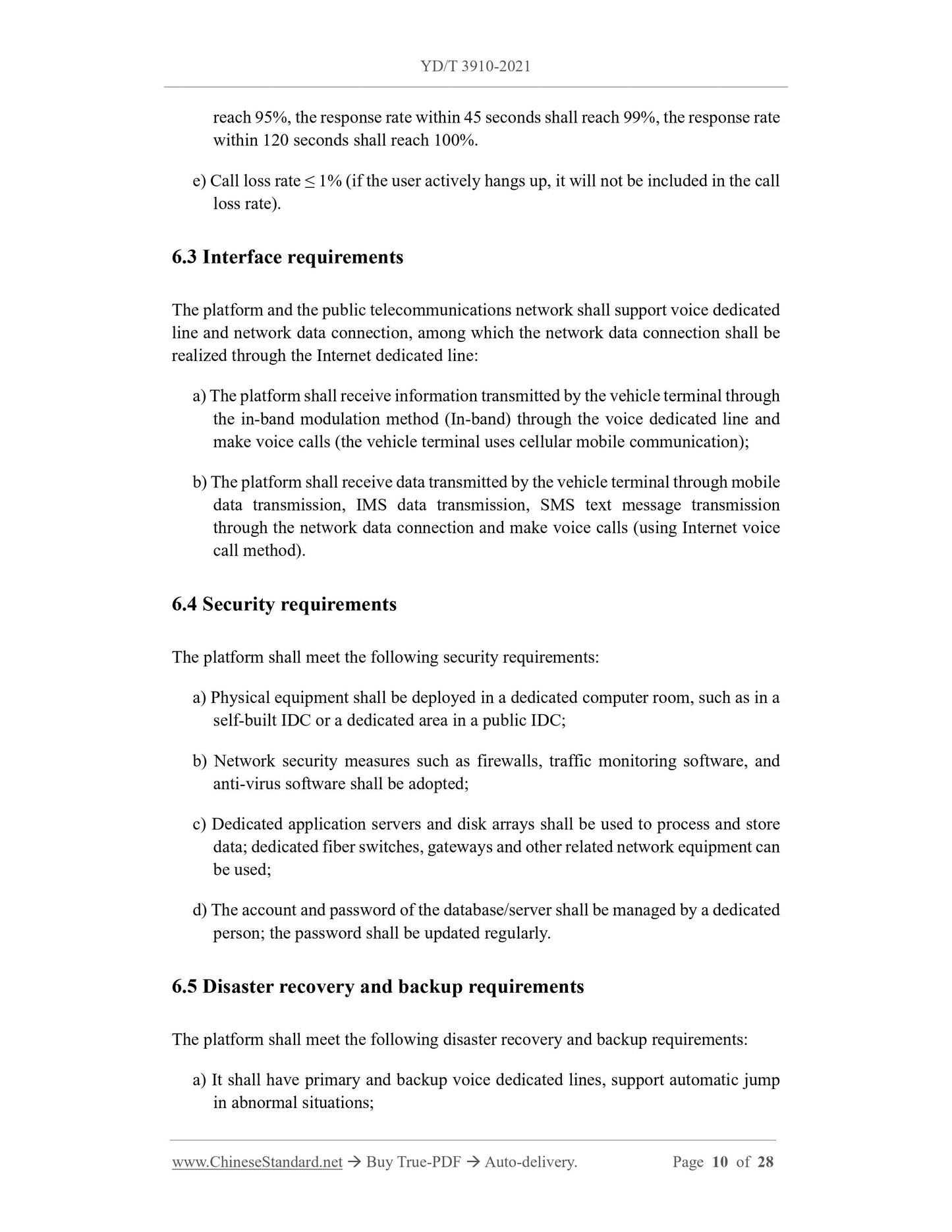1
/
of
6
www.ChineseStandard.us -- Field Test Asia Pte. Ltd.
YD/T 3910-2021 English PDF (YD/T3910-2021)
YD/T 3910-2021 English PDF (YD/T3910-2021)
Regular price
$590.00
Regular price
Sale price
$590.00
Unit price
/
per
Shipping calculated at checkout.
Couldn't load pickup availability
YD/T 3910-2021: Vehicle emergency call system based on public telecommunication network - Technical requirements and test method of the vehicle emergency rescue platform
Delivery: 9 seconds. Download (and Email) true-PDF + Invoice.Get Quotation: Click YD/T 3910-2021 (Self-service in 1-minute)
Newer / historical versions: YD/T 3910-2021
Preview True-PDF
Scope
This standard specifies the technical requirements and test methods for the vehicleemergency rescue platform of the vehicle emergency call system based on the public
telecommunications network, including platform location, platform function
requirements, performance requirements, interface requirements, security requirements,
disaster recovery requirements, test methods, etc.
This standard applies to the vehicle emergency rescue platform of the vehicle
emergency call system based on the public telecommunications network (hereinafter
referred to as the "platform").
Basic Data
| Standard ID | YD/T 3910-2021 (YD/T3910-2021) |
| Description (Translated English) | Vehicle emergency call system based on public telecommunication network - Technical requirements and test method of the vehicle emergency rescue platform |
| Sector / Industry | Telecommunication Industry Standard (Recommended) |
| Classification of Chinese Standard | M21 |
| Word Count Estimation | 26,285 |
| Date of Issue | 2021-05-17 |
| Date of Implementation | 2021-07-01 |
| Regulation (derived from) | Ministry of Industry and Information Technology Announcement No. 14 of 2021 |
| Issuing agency(ies) | Ministry of Industry and Information Technology |
| Summary | This standard specifies the technical requirements and test methods for the vehicle emergency rescue platform of the vehicle-mounted emergency alarm system based on the public telecommunication network, including platform location, platform function requirements, performance requirements, interface requirements, safety requirements, disaster recovery backup requirements, test methods, etc. . This standard applies to the vehicle emergency rescue platform based on the vehicle emergency alarm system of the public telecommunication network. |
Share
